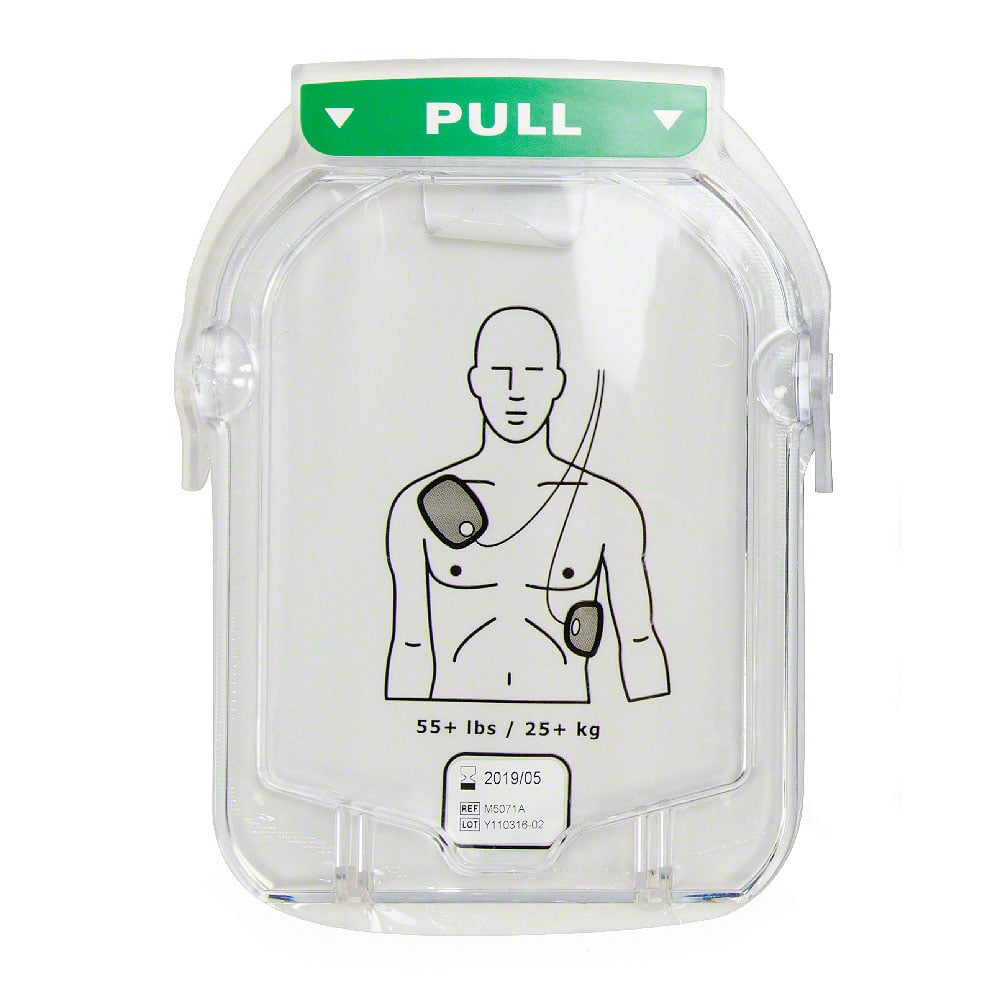You have already made the most important decision to get an automated external defibrillator (AED) for your home, school, or small business. But as you compare models, you are likely discovering that owning an AED involves more than just mounting it on the wall. The ongoing maintenance, while simple, is critical for ensuring the device works when a life is on the line.
Managing separate expiration dates for batteries and electrode pads can feel like a small but persistent chore. For a busy parent or a small business owner, it is one more task on a never ending list. What if there was a way to simplify this essential responsibility, reduce the risk of human error, and gain complete confidence in your device’s readiness? There is, and it is built around an elegant, all in one consumable system.
The hidden burden of traditional AED upkeep
Every AED relies on two key consumables to function, electrode pads that deliver the shock and a battery to power the device. In a traditional maintenance model, these are two separate items with two different expiration dates. Electrode pads typically last about two years, while batteries can last up to five.
This staggered timeline creates a hidden administrative burden. You have to track two dates for every single AED you own. Studies from emergency preparedness organizations consistently show that expired consumables are a primary cause of AED failure during a rescue. Data from field audits indicates that as many as one in five non compliant AEDs are found with expired pads or a dead battery. Missing a single replacement cycle could mean the difference between a successful rescue and a tragic outcome.
For a family or a community center, this means setting multiple calendar reminders and hoping nothing gets overlooked. For a business with AEDs in several buildings, it means a complex tracking spreadsheet and double the ordering process. This is precisely the kind of small detail that can fall through the cracks, which is why understanding your device’s maintenance needs is a key part of choosing the right AED for your organization.
Comparing AED maintenance approaches
When evaluating an AED, the long term ease of use is just as important as the features on the device itself. Let’s compare the two main approaches to consumable management.
The traditional model separate components
Many AEDs require you to purchase, track, and replace batteries and electrode pads separately. While the individual cost of a set of pads might seem low, this model introduces complexity. You might replace the pads this year, but the battery might not be due for another two years. This increases the chance that one component gets forgotten, compromising the entire device. Regularly replacing AED batteries is just as vital as replacing the pads.
The all in one model combined cartridges
A more modern and streamlined approach combines the battery and electrode pads into a single cartridge. This means there is only one item to track and one expiration date to remember. When the cartridge expires, you replace the entire unit, instantly refreshing both your battery and your pads. This virtually eliminates the risk of having fresh pads with an aging battery.

Comparing AED maintenance models:
The all-in-one Pad-Pak system simplifies upkeep with fewer replacements and longer lifespan, reducing hassle and cost over time.
Why trust HeartSine for AED maintenance
The HeartSine Samaritan Pad-Pak system is the leading example of this simplified, all in one approach. It was designed specifically to address the challenges of long term AED ownership for everyday users.
The Pad-Pak is a single cartridge containing both the battery and the electrode pads. It has a remarkable four year lifespan, one of the longest in the industry. Instead of juggling two or three replacement cycles over four years, you have just one. This design philosophy is why HeartSine AEDs are ideal for public spaces and schools where simplicity and reliability are paramount.
When you invest in a device like the HeartSine Samaritan PAD 360P, you are not just getting a user friendly AED, you are getting a system designed for minimal maintenance and maximum peace of mind. When your four year expiration date approaches, you simply order a new Samaritan Pad-Pak cartridge, snap it in, and your AED is ready for another four years.
HeartSine’s innovative Pad-Pak system combines essential components into one, ensuring reliable AED readiness with minimal effort over 4 years, trusted by professionals worldwide.
Making the final decision simplified AED maintenance ROI
When choosing an AED, think beyond the initial purchase price and consider the return on your investment. The ROI here is not measured in dollars, but in confidence, time saved, and readiness.
For a homeowner, the Pad-Pak system means one less worry. You have a single date to put on your calendar every four years. For a small business owner, the value is even clearer. An all in one system significantly reduces the administrative time spent on managing your safety equipment. This streamlined approach, combined with management tools like the Response Ready App, ensures your AED program achieves compliance and readiness with minimal effort.
The decision for a simpler maintenance model is a decision for greater reliability. By choosing a system that designs out complexity, you are actively reducing the chances of equipment failure when it matters most.

Simplify your AED maintenance decision: The Pad-Pak system offers proven cost and time savings over traditional methods, helping you protect your business efficiently.
We make AED management easy
At Response Ready, our goal is to make life saving technology accessible and simple to manage. That is why we champion solutions like the HeartSine Pad-Pak. We have curated an AED Superstore that focuses on reliable, user friendly devices perfect for non medical professionals.
Explore our HeartSine AED value packages that bundle everything you need to get started. If you have questions about which maintenance plan is right for you, our expert team is here to help. You can contact us anytime for a personalized consultation.
Frequently asked questions
Q: Is an all in one cartridge more expensive?
A: While the upfront cost of a single Pad-Pak cartridge may be more than a set of pads alone, it is often more affordable than buying electrode pads and a separate battery over a four year period. This approach also saves you money on separate shipping costs and reduces the administrative time needed to track and order parts.
Q: How do I know which Pad-Pak I need?
A: HeartSine offers distinct Pad-Paks for adults and children. The standard gray Pad-Pak is for adults and children over 8 years old or 55 pounds. The pink Pediatric Pad-Pak is for children between 1 and 8 years old. Our product pages clearly specify which device they are for, and our team is always available to help you choose the correct one.
Q: What happens if I use the AED? Do I have to buy a whole new system?
A: Yes, after any use of the AED, the Pad-Pak must be replaced. The cartridge provides the energy for a single rescue event. This ensures the device is fully charged and has a fresh set of pads for the next potential emergency. This is standard procedure for all AED consumables after a use.
Q: How long does the HeartSine Pad-Pak last?
A: The HeartSine Pad-Pak has a four year shelf life from the date of manufacture. This combined lifespan for both battery and pads is one of the longest in the industry, which greatly simplifies your readiness checks and reduces long term hassle.
Q: Can I manage multiple AEDs with Pad-Paks easily?
A: Absolutely. The single expiration date per device makes tracking much simpler, especially for organizations managing several AEDs across different sites. This process is made even easier with tools like the Response Ready App, which automates readiness checks and sends you a single reminder when it is time to replace a cartridge.






